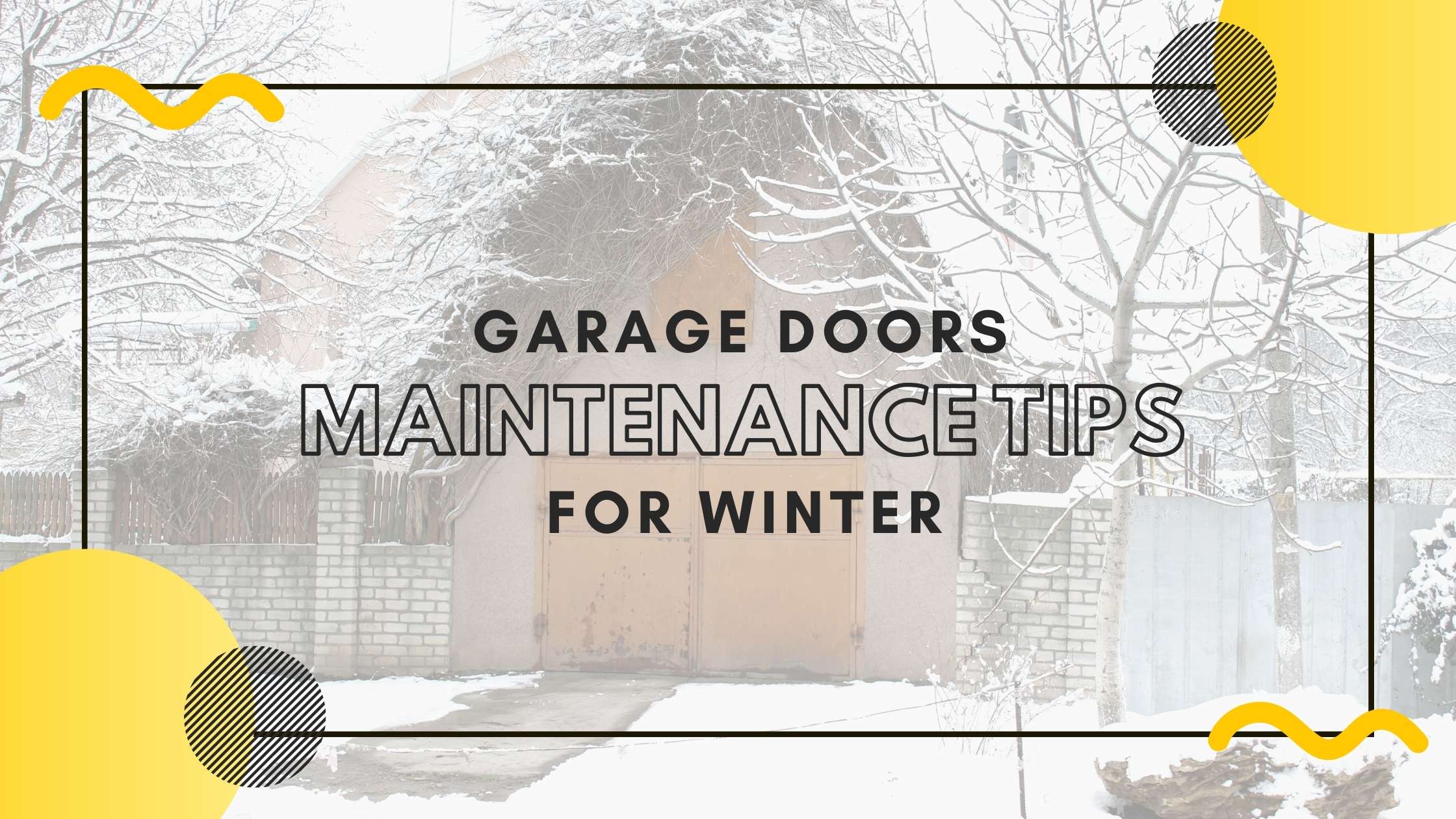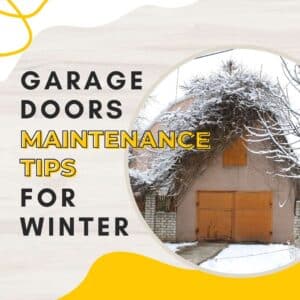
7 Tips to Prepare your Garage Door for Winter
Winter is right around the corner, which means that the

Prepare Ahead of Time
As snowstorms, deep freezes, and bone-chilling temperatures sweep across Northern California and the Bay Area, you may feel compelled to wrap up in blankets and stay inside for the next few months. Don’t forget about your garage doors as the temperatures drop and you begin making changes to keep your home as safe and warm as possible during the winter months.
Your garage door requires more care and maintenance than ever before. Extreme temperatures and stormy weather can cause a wide range of issues, including warping and freezing of your opening mechanisms. Your garage door may require costly and time-consuming repairs if it is not properly maintained.
Schedule a maintenance check at least twice a year if you truly want to extend the life of your garage doors. Aside from that, you can perform some simple do-it-yourself inspections and repairs to keep your garage doors in good working order — especially if snow, ice, and salt end up on your driveway.
Here are some important garage door maintenance tips to help you prepare for the upcoming cold weather.
Use the following tips to ensure that your door works properly throughout the winter.
Prevent Damage with These Tips
While keeping up with your door may appear to be a losing battle, a little prevention goes a long way when it comes to avoiding costly repairs.
Remove Ice and Snow
Don’t wait for a warm patch to melt the ice and snow. The rubber seal on the bottom of your garage door can become stuck in the ice, making it difficult to open. If you try to force open the door, you risk tearing the bottom seal, stripping the machine’s gears, or even burning out your operator from the strain.
Is the door already frozen? With an ice scraper, chip away the ice beneath the door, and place a portable heater nearby to slowly melt the ice. Pouring hot water over the ice to melt it is an option, but it isn’t ideal because the hot water will cool and freeze, potentially exacerbating the problem.
Sprinkle Salt or Cat Litter
Sprinkling salt where the seal meets the concrete is one of the best ways to keep your garage door from freezing shut. Salt lowers the freezing point of water, reducing ice formation.
As an alternative to salt, some homeowners prefer to sprinkle kitty litter. While it does not melt ice, kitty litter absorbs water and adds traction to your vehicle.
Spray Silicone Spray to the Seal
Silicone sprays repel water, reducing the amount that enters and freezes the seal. Cooking spray and vegetable oil have a similar effect, repelling enough water to keep it from sticking. Keep in mind that silicone spray lubricants can last for several weeks per application, but repeated use may cause foam rubber seals and paint to deteriorate. Cooking sprays can also dry out or disintegrate the rubber over time, so use them sparingly.
Leave Your Garage Door Open throughout the Day
Because sunlight can help melt ice around your garage door, leave it open throughout the day. This prevents your garage door from sticking to the ice and helps to break up any frost that has formed on your panels.
Pull the manual door release cable to manually open the door if you are concerned about wearing out your operator.
Keep Your Garage Door Tracks Lubricated
Despite the fact that you should lubricate your garage door all year round, the winter is a crucial time to do so. This makes it so that even during severe winter weather, your garage door components may move along their tracks with ease.
Try to select a lubricant made exclusively for garage doors and their components rather than using WD-40 as a last-minute fix. Spray everything, including the hinges, springs, rollers, and bushings, and then re-spray everything a month later to strengthen it.
Repair The Following Damages with These Tips
Even if you take great care to maintain your door, extreme temperatures can still inflict a lot of harm. You might need to call garage door experts for more complicated garage door problems or if needs replacement. Thankfully, you might be able to patch up some of the damage on your own.
Contracting Metal
In colder temperatures, metal shrinks. As a result, throughout the winter, your garage door’s springs, screws, and other metallic components shrink and seize up. Even though you can’t stop the metal from contracting, routinely lubricating the parts makes sure they keep working properly.
Too Much Grease
While lubrication is essential for keeping your door operating properly, too much oil might actually harm your door. It may be challenging to open and close your door if the rollers are out of line due to excessive grease in the tracks. When applying lubrication, use a towel to remove any extra grease. If you’re concerned about grease accumulation, go to a local garage door specialist who can help you find the ideal balance.
Thickening Oil
Grease or oil can become thicker and harder at low temperatures, providing little or no lubrication. Remove any old, dried-out grease from the rollers and tracks with a cloth before adding more lubricant. If necessary, clean up old grease and dirt using a solvent like WD-40. Apply a silicone-based oil next to keep your door operating easily over the winter.
Distorted Tracks
A lot of garage door tracks are made of aluminum, which can deform and bend in very hot or very cold temperatures. Winter freezing and thawing can bend the frame, making it jam. You might be able to remove any dents with a hammer, but you’ll frequently need to hire a contractor to replace your garage door or fix it.
Ask a professional for assistance if any of these fixes or preventative measures seem too challenging or complicated for you to handle.

Winter is right around the corner, which means that the

Prepare Ahead of Time As snowstorms, deep freezes, and bone-chilling
Subscribe to our blog and receive our latest street art posts in your inbox.
(it’s Free!)

Winter is right around the

Many of us consider our

Prepare Ahead of Time As
31911 Hayman St.
Hayward, CA 94544
(510) 657-8700
Copyright © 2024 Right Way Garage Doors. All Rights Reserved.
Enter your info and spin the wheel. This is your chance to win amazing discounts!
Our rules, terms, and conditions: